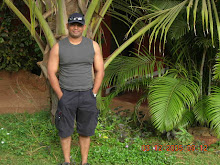“Block corruption is rare but it does happen. As databases get larger and larger – the probability of it happening at some point nears 100%.”--Mr. Tom Kyte Oracle ExpertBlock corruption is while the data is being written to the data blocks, if the write to the block fails abruptly, I mean that there is a partial write in the block, may be because of power disruption or I/O problem, leaving no time for header to be updated, or row data to be populated, oracle leaves the block corrupt.In case of block corruption you can normally use the database unless you try to read that particular block, against which it shoots up the block corruption error.Generally block corruption occurs if write fails on the block, when the transaction is being committedORA-01578:ORACLE data block corrupted (file # string, block # string)Whenever we encounter above error message mean we have BLOCK CORRUPTION.NOTE: We can find detail information about block corruption in alert.log fileTwo types of block corruption can happens- Physical corruption (media corrupt)- Logical corruption (soft corrupt)Physical corruption can be caused by defected memory boards, controllers or broken sectors on a hard disk;Logical corruption can among other reasons be caused by an attempt to recover through a NOLOGGING action.Difference between logical and physical corruption Logical corruption is header - footer - that is one of the checks, yes (it is looking for fractured blocks and when it hits one, it'll re-read it, that is why there is no need for "alter tablespace begin backup" with rman) Physical corruption is "we cannot read the block from disk, something is physically preventing us from doing so”.How to detect block corruption?1. DBVERIFY utilityDBVERIFY is an external command-line utility that performs a physical data structure integrity check. It can be used on offline or online databases, as well on backup files. You use DBVERIFY primarily when you need to ensure that a backup database (or datafile) is valid before it is restored.http://dbataj.blogspot.com/2007/04/offline-database-verification-utility.html2. Block checking parametersThere are two initialization parameters for dealing with block corruption:- DB_BOCK_CHECKSUM (calculates a checksum for each block before it is written to disk, every time)causes 1-2% performance overhead- DB_BLOCK_CHECKING (serverprocess checks block for internal consistency after every DML)causes 1-10% performance overheadNote: In10g db_block_checksum value TYPICAL is implying TRUE and db_block_checking value FULL implying TRUE.DB_BLOCK_CHECKING Initialization Parameterhttp://download.oracle.com/docs/cd/B19306_01/server.102/b14231/repair.htm#sthref31763. ANALYZE TABLE tablename VALIDATE STRUCTURE CASCADE SQL statementValidate the structure of an index or index partition, table or table partition, index-organized table, cluster, or object reference (REF).ANALYZE: Reporting Corruptionhttp://download.oracle.com/docs/cd/B19306_01/server.102/b14231/repair.htm#sthref31734. RMAN BACKUP command with THE VALIDATE optionYou can use the VALIDATE option of the BACKUP command to verify that database files exist and are in the correct locations, and have no physical or logical corruptions that would prevent RMAN from creating backups of them. When performing a BACKUP... VALIDATE, RMAN reads the files to be backed up in their entirety, as it would during a real backup. It does not, however, actually produce any backup sets or image copies.Detection of Logical Block CorruptionBesides testing for media corruption, the database can also test data and index blocks for logical corruption, such as corruption of a row piece or index entry. If RMAN finds logical corruption, then it logs the block in the alert.log. If CHECK LOGICAL was used, the block is also logged in the server session trace file. By default, error checking for logical corruption is disabled.For BACKUP commands the MAXCORRUPT parameter sets the total number of physical and logical corruptions permitted in a file. If the sum of physical and logical corruptions for a file is less than its MAXCORRUPT setting, the RMAN command completes successfully. If MAXCORRUPT is exceeded, the command terminates and RMAN does not read the rest of the file. V$DATABASE_BLOCK_CORRUPTION is populated with corrupt block ranges if the command succeeds. Otherwise, you must set MAXCORRUPT higher and re-run the backup to find out the corrupt block ranges.RMAN found any block corruption in database then following Data Dictionary view populated.V$COPY_CORRUPTIONV$BACKUP_CORRUPTIONV$DATABASE_BLOCK_CORRUPTIONUsing RMAN to Validate Database Fileshttp://download.oracle.com/docs/cd/B19306_01/backup.102/b14192/bkup005.htm#i10066735. EXPORT/IMPORT command line utilityFull database EXPORT/IMPORT show=y is another method.. about to export SCOTT's tables via Conventional Path .... . exporting table BONUSEXP-00056: ORACLE error 1578 encounteredORA-01578: ORACLE data block corrupted (file # 4, block # 43)ORA-01110: data file 4: 'C:\ORA10GHOME\ORADATA\ORCL10G\USERS01.DBF'6. DBMS_REPAIR packagedbms_repair is a utility that can detect and repair block corruption within Oracle. It is provided by Oracle as part of the standard database installation.http://www.oracleutilities.com/Packages/dbms_repair.htmlHow to Repair & Fix block corruption?We can recover everything but we have valid database backup.Whenever we found block corruption then first need to find out which type of block corruption occurred because block corruption recovery depends on block corruption type.Like Corrupted block related to TABLE segment, INDEX segment, TABLE PARTITION segment, INDEX PARTITION segment, ROLLBACK segment, LOB segment.Through below query we can find out corrupted block typeselect segment_type,owner'.'segment_namefrom dba_extentswhere file_id = [&file_id] and [&block] between block_id and block_id+blocks -1; Below is example with RMAN BLOCK MEDIA RECOVERY. SQL> conn scott/tigerConnected.SQL> select * from test;select * from test *ERROR at line 1:ORA-01578: ORACLE data block corrupted (file # 5, block # 11)ORA-01110: data file 5: 'C:\INDEXDATA01.DBF'First check which type of block corruption happened through above mentioned query. RMAN> blockrecover datafile 5 block 11; Starting recover at 29-APR-08using channel ORA_DISK_1 starting media recoverymedia recovery complete, elapsed time: 00:00:00 Finished recover at 29-APR-08If you are not using rman then applying below procedure- if it is index then drop and recreate index- if it is table and you have backup of that table then restore backup on another database and exp/imp the table.
Same Reference:http://sysdba.wordpress.com/2006/04/05/how-to-check-for-and-repair-block-corruption-with-rman-in-oracle-9i-and-oracle-10g/NOTE: Find more information “Handling Oracle Block Corruptions in Oracle7/8/8i/9i/10g” Metalink Note: 28814.1How to corrupt database block for practice purpose?On Unix:Use dd command$man ddOn Windows:Use Editor and open datafile write some junk character at middle of file and save it.
Subscribe to:
Post Comments (Atom)


1 comment:
A details about block corruption is discussed in Block corruption in oracle
Post a Comment